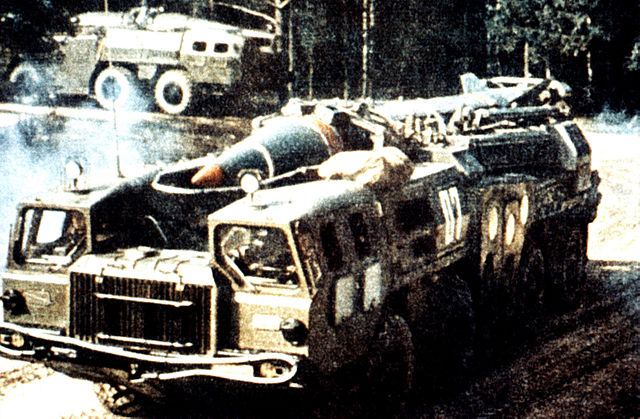The R-17 Elbrus, GRAU index 9K72 is a tactical ballistic missile, initially developed by the Soviet Union. It is also known by its NATO reporting name SS-1C Scud-B. It is one of several Soviet missiles to carry the reporting name Scud; the most prolifically launched of the series, with a production run estimated at 7,000 (1960–1987). Also designated R-300 during the 1970s, the R-17 was derived from the R-11 Zemlya. It has been operated by 32 countries and manufactured in four countries outside the Soviet Union. It is still in service with some. It's been called the Hwasong-5 in North Korea.
An R-17 missile at the Muzeum Uzbrojenia (Museum of Armament), Poznań, Poland (2004)
The rear section of an 8K14 missile, showing the fixed fins and the graphite vanes that control the missile's path.
R-17 on reload transport trailer with ZIL-131 tractor
MAZ-543 Uragan carrying a 9K72 Elbrus
The R-11 Zemlya, GRAU index 8A61 was a Soviet tactical ballistic missile. It is also known by its NATO reporting name SS-1b Scud-A. It was the first of several similar Soviet missiles to be given the reporting name Scud. Variant R-11M was accepted into service, with GRAU index 9K51 (9К51).
9U218 launcher (rocket without a warhead)
R-11 Zemlya (8К11) next to the larger RT-20 and Tsyklon-3 on display in downtown Dnipro
R-11FM in Military Historical Museum of Artillery, Engineers and Signal Corps







